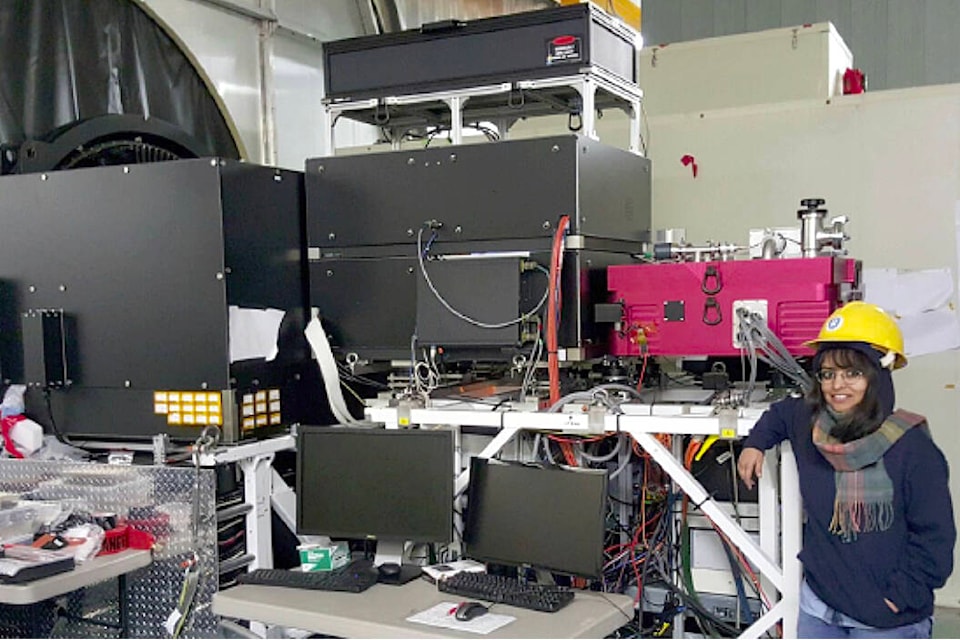It might not be impossible to find a particular grain of rice in a rice paddy – if one has the right tools.
Garima Singh, a post-doctoral fellow at the National Research Council Herzberg Astronomy and Astrophysics Research Centre in Victoria, uses the grain of rice analogy to describe the difficulties in finding exoplanets orbiting stars dozens of light years from Earth.
Singh specializes in developing instruments and improving the technology used in to directly image large, self-luminous exoplanets and is on a quest to help astronomers search for and image smaller, potentially Earth-like exoplanets.
She is currently helping to develop a sub-system and an upgrade of a ‘planet imager’ instrument that was operating with the the Gemini South Telescope in Chile, which operates together with the Gemini North Telescope in Hawaii.
Singh and the researchers with whom she is working are also developing an instrument for detecting exoplanets and retrieving spectra, which will be tested in Hawaii as well.
About 5,000 exoplanets have been discovered in the Milky Way galaxy so far, but only about 50 have been imaged directly.
“At present with current technology, we have been able to take direct images of … giant planets, which are self-luminous – they emit their own light – and they lie far away from their stars. When I say ‘far away,’ they lie at a distance of farther than 10 AU from their stars,” she said. “An AU is one astronomical unit, which is the distance between our sun and Earth, so the planets that we have been taking direct images of, they’re super-giant, self-luminous and they lie very far away from their stars.”
Some of the difficulty in imaging smaller exoplanets is because the large telescopes needed to detect them are Earth-based. The extremely faint light detected from exoplanets – which is at least one million times dimmer than their stars – must pass through Earth’s atmosphere, which bends and distorts the light, and there are also other factors, such as vibrations within the telescopes. What results is not a clean singular dot-like image that can be easily discerned as a planet, but an array of speckles or noise. The trick is in refining the image processing technology so it can suppress the noise to allow astronomers to pinpoint the presence of an exoplanet.
The upgraded technology Singh is helping develop will allow astronomers to image smaller exoplanets orbiting less than 10 AU from their stars.
“The reason we’re not able to make images of Earth-like planet or … planets at our Solar System scale is because there’s a challenge of getting rid of speckles,”she said. “Speckles are something that look like planetary signals, but they’re not planetary signals. They’re false positives … because of several factors, which include thermal distortions, temperature variations, alignment errors. Even the Earth’s atmospheric turbulence also introduces speckles and they basically hide the planetary signals.”
Before coming to Canada, Singh worked as a post-doctoral fellow with NASA’s jet propulsion laboratory in Pasadena, Calif., and was a Marie Shlodowska-Curie Actions post-doctoral fellow at Observatoire de Paris-Meudon in France.
In November, Singh will move to Hawaii to work at Gemini North Telescope to ensure the calibration instrument performs as expected.
Singh is the guest speaker at Nanaimo Astronomy Society’s meeting Thursday, Oct. 27, when she will discuss the direct imaging techniques and related challenges. For more information, visit www.nanaimoastronomy.com.
READ ALSO: Space telescope scientist featured at next Nanaimo Astronomy Society meeting
photos@nanaimobulletin.com
Like us on Facebook and follow us on Twitter
